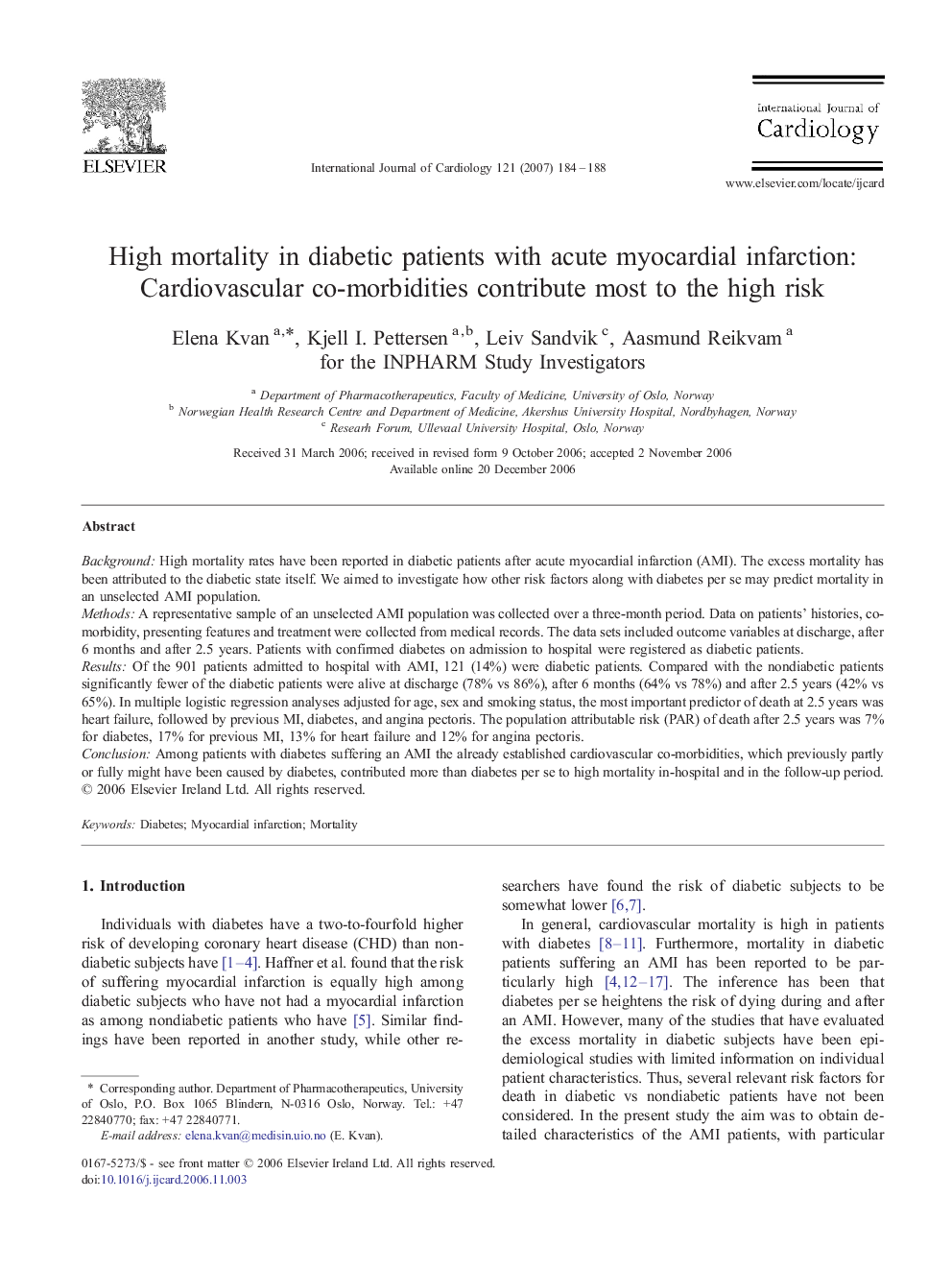| کد مقاله | کد نشریه | سال انتشار | مقاله انگلیسی | نسخه تمام متن |
|---|---|---|---|---|
| 2934554 | 1576365 | 2007 | 5 صفحه PDF | دانلود رایگان |

BackgroundHigh mortality rates have been reported in diabetic patients after acute myocardial infarction (AMI). The excess mortality has been attributed to the diabetic state itself. We aimed to investigate how other risk factors along with diabetes per se may predict mortality in an unselected AMI population.MethodsA representative sample of an unselected AMI population was collected over a three-month period. Data on patients’ histories, co-morbidity, presenting features and treatment were collected from medical records. The data sets included outcome variables at discharge, after 6 months and after 2.5 years. Patients with confirmed diabetes on admission to hospital were registered as diabetic patients.ResultsOf the 901 patients admitted to hospital with AMI, 121 (14%) were diabetic patients. Compared with the nondiabetic patients significantly fewer of the diabetic patients were alive at discharge (78% vs 86%), after 6 months (64% vs 78%) and after 2.5 years (42% vs 65%). In multiple logistic regression analyses adjusted for age, sex and smoking status, the most important predictor of death at 2.5 years was heart failure, followed by previous MI, diabetes, and angina pectoris. The population attributable risk (PAR) of death after 2.5 years was 7% for diabetes, 17% for previous MI, 13% for heart failure and 12% for angina pectoris.ConclusionAmong patients with diabetes suffering an AMI the already established cardiovascular co-morbidities, which previously partly or fully might have been caused by diabetes, contributed more than diabetes per se to high mortality in-hospital and in the follow-up period.
Journal: International Journal of Cardiology - Volume 121, Issue 2, 1 October 2007, Pages 184–188